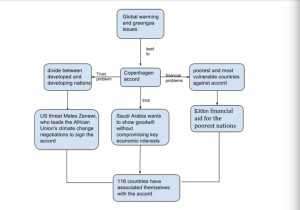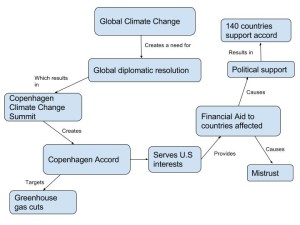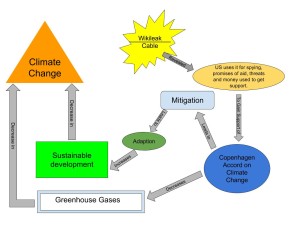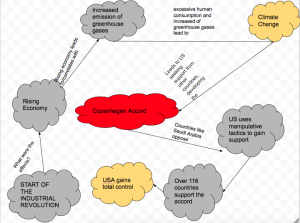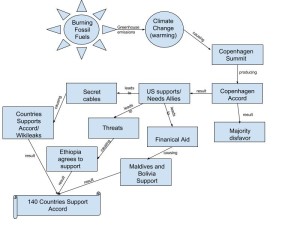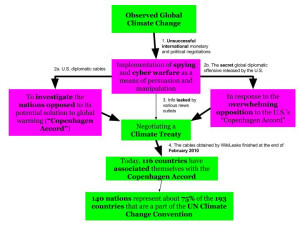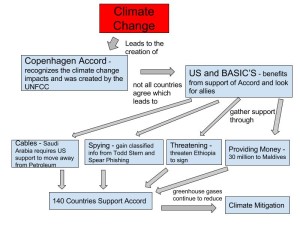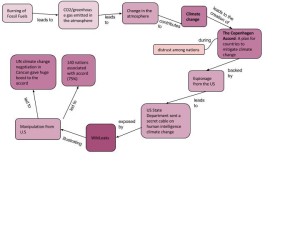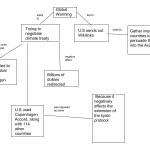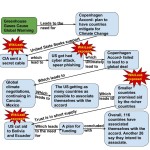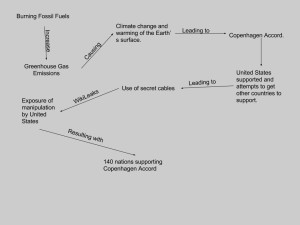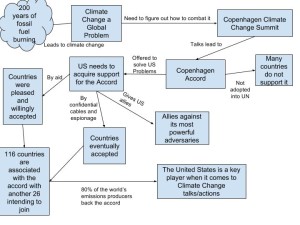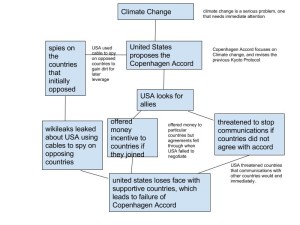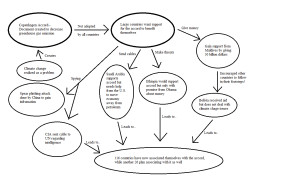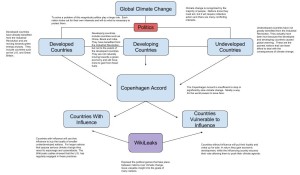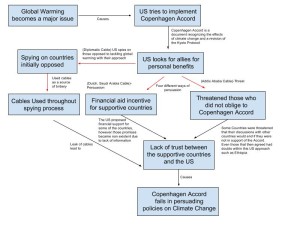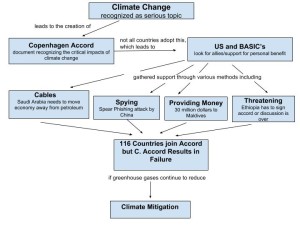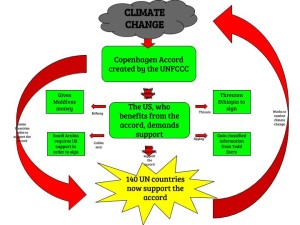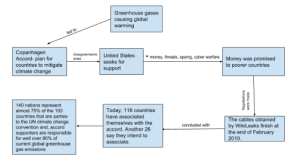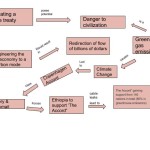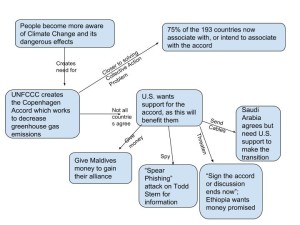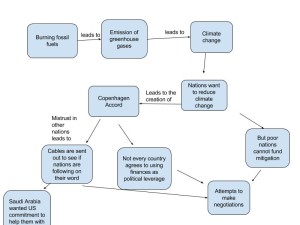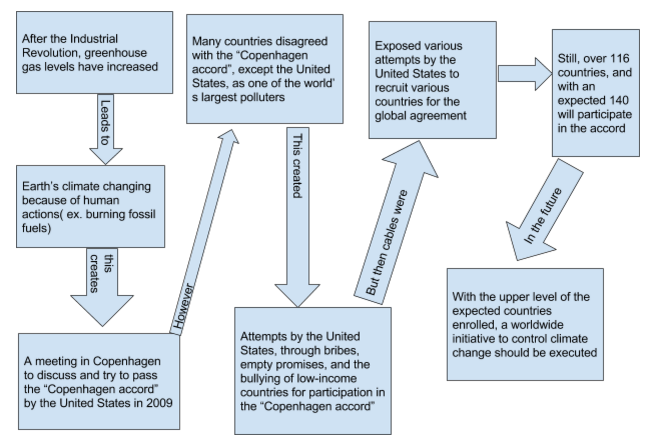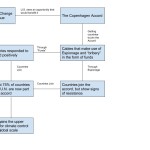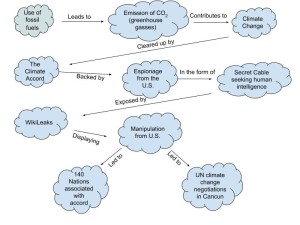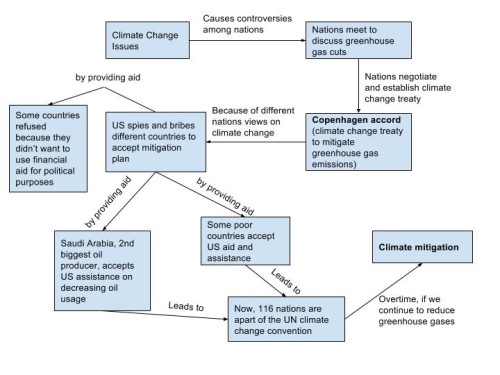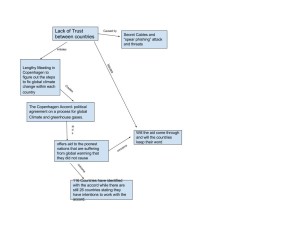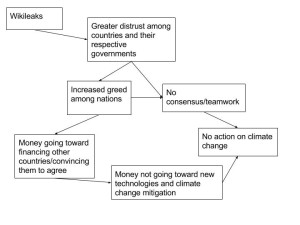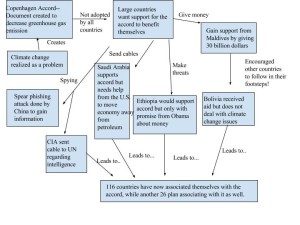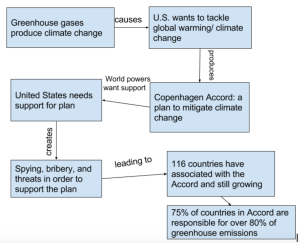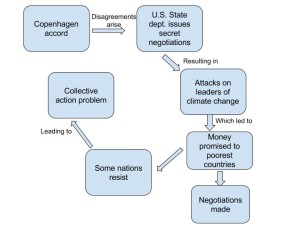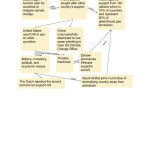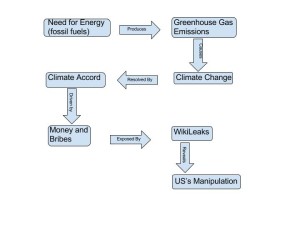This article includes many aspects information. However, for my diagram, I mainly focus on the interactions between the cables sent by U.S, the Copenhagen Accord and other countries. I started my diagram with Global Warming and Greenhouse gases problems, and it is the cause of the creation of the Copenhagen Accord. Based on the article, the United States wanted as many nations as possible to accept the Copenhagen Accord for reducing greenhouse gases. In order to achieve this purpose, U.S used several methods to make other countries sign the accord. So I divided countries into different groups with different issues and solutions. First of all, it is easy to bind to rapidly growing countries and rich countries. However, the accord will cause a great loss for those poor countries that do not contribute to Greenhouse emissions. For these countries with financial issues, the record promised to send $30 billion to change their opinions, and I classified these countries as one group. Second, some countries having trust issue such as Ethiopia can be classified as one group. The other countries like Saudi Arabia are willing to show their positive attitudes toward the Copenhagen Accord but they do not want to make too much change on their economy can be defined as the third group. Because of the U.S government, even though there have 26 countries still not associated with the Copenhagen Accord, most of countries associated themselves with it. Finally, I draw the diagram with the achievement under the U.S’s hard working.
I believe the climate change problem is related to two concepts we discussed before, which are ethics and individual & collective action. When we talk about climate change, we are dealing with virtue and action ethics. I think most people believe protecting environment is the right thing, and they are always taught what they should do. These can be defined as virtue ethics. However, how many people will real put this into action? Do they turn virtue ethics into action ethics? Moreover, this situation also can goes in to individual & collective action problem. To be honest, U.S and some other developed countries released most of pollutions during their developed period. However, now they developed with the greenhouse gas level rose, and then those developed countries says to other developing countries that “you are responsible for greenhouse gases release, and you need to make sacrifice to reduce.” We admitted we have responsibility to change the situation, so at least, after the Copenhagen meeting, my country’s government asked us to set AC temperature no lower than 22℃. The United State, which is still one of the largest polluters, asked other countries to change their economy and reduce their greenhouse emissions, but what did it do? When I came to here, I noticed people always set AC to 18 ℃, and the lights always keep on even no one in the room. In addition, I believe the State Department cables should be made public because U.S needs to be the model and lead the other countries to make actions. In conclusion, climate change is not a personal thing. We all need to work together on these issues to make real changes in the world.

